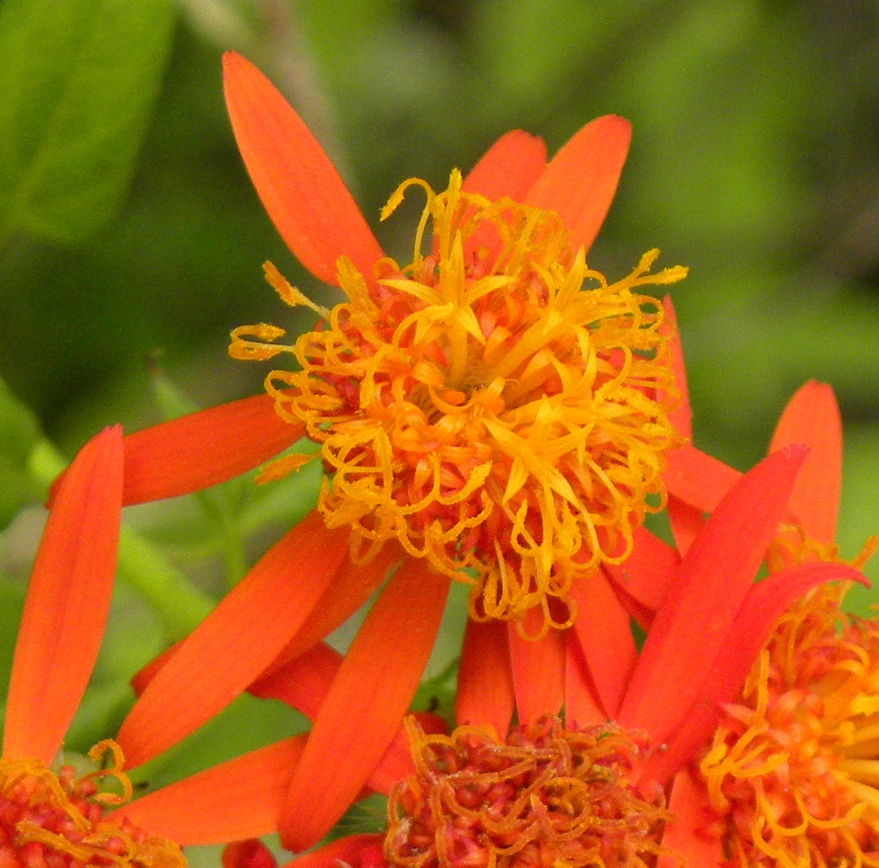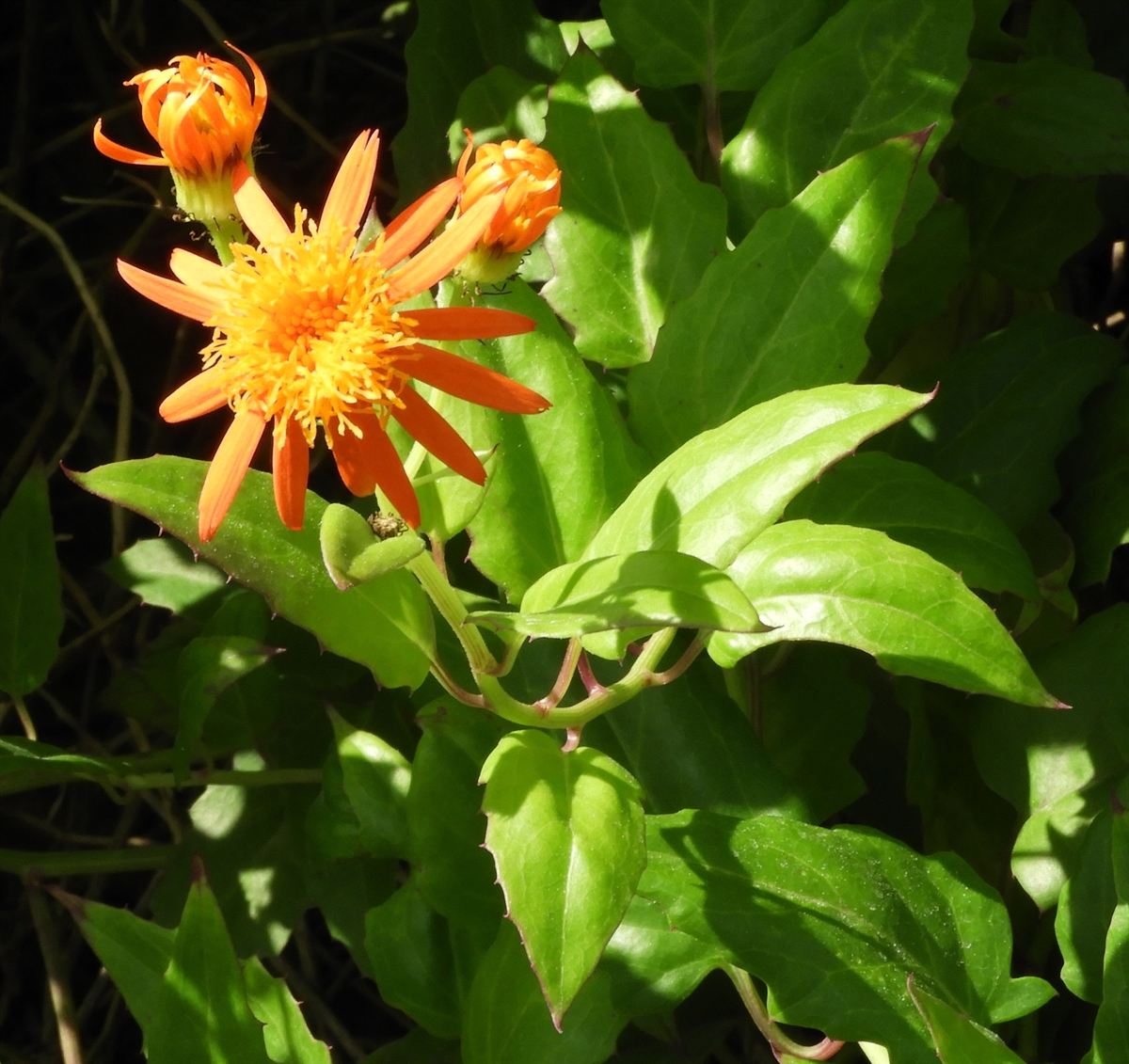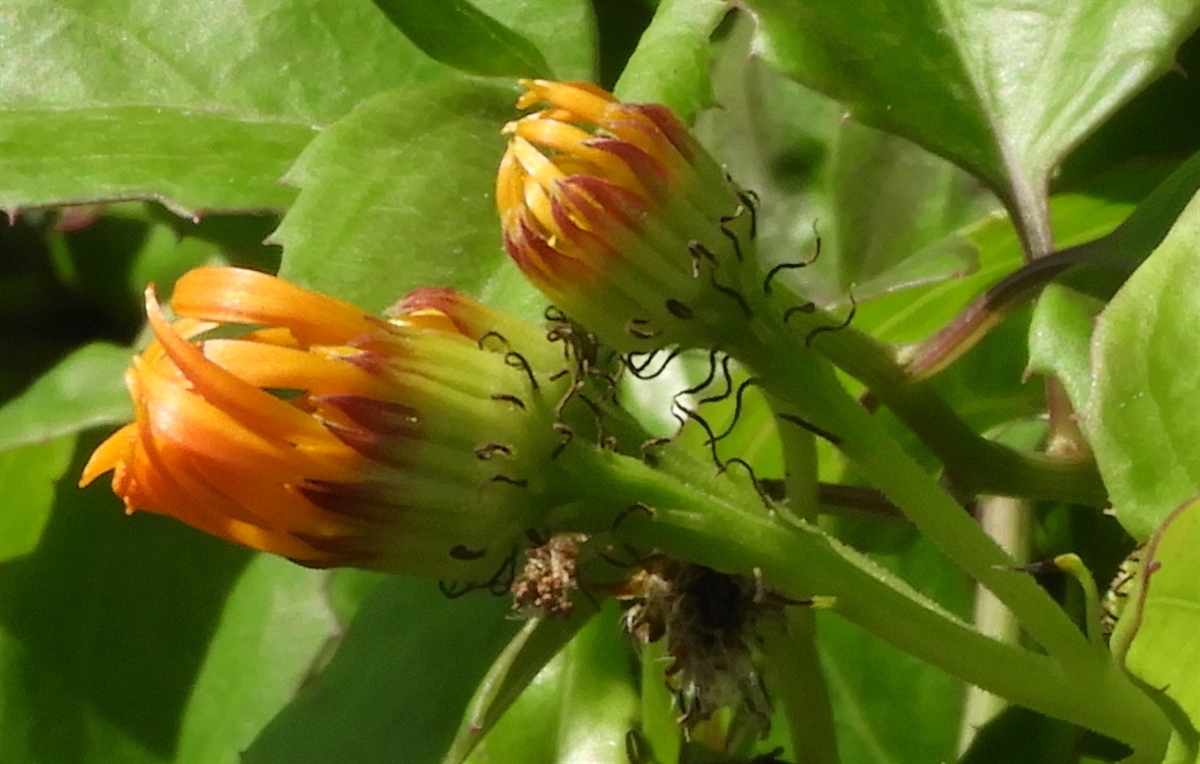Habit: Pseudogynoxys chenopodioides a slightly woody vine to 6 m in length often with sparse pubescence. The leaves are arranged alternately, to 15 cm in length, ovate to lanceolate, with a crenate leaf margin of which the crena are aristate and an acuminate to acute leaf apex.
The actinomorphic flowers are arranged in heads. The heads are subtended by a series of involucral bracts (phyllaries). The calyx is modified as a ring of hairs (pappus). There are both perfect and imperfect (carpellate) flowers in the heads. The perfect (disc) flowers are in the center and the imperfect (ray) flowers are arranged around the edge of the heads. Each flower is subtended by bracts.
The imperfect flowers have 3 dark orange petals and no stamens. The perfect flowers have a corolla with 5 fused, yellow/red/orange petals. There are 5 stamens fused at their base. In both types of flowers, the ovary is inferior with a single locule but only the perfect flowers have functional ovules. The fruit is a pubescent achene at maturity that retains the modified calyx (pappus) as white, hairlike bristles.
Habitat: Pseudogynoxys chenopodioides in Human Altered environments (yards, gardens, fields, waste areas).
Distribution: Pseudogynoxys chenopodioides is NOT native to the Lucayan Archipelago but is found in the northern and central island groupings. It is native to Mexico, Central America and parts of South America. It is now in parts of the Caribbean.
Medicinal/Cultural/Economic usage: Pseudogynoxys chenopodioides is not known to be used medicinally in the Lucayan Archipelago.
It has been used in the horticultural industry.



